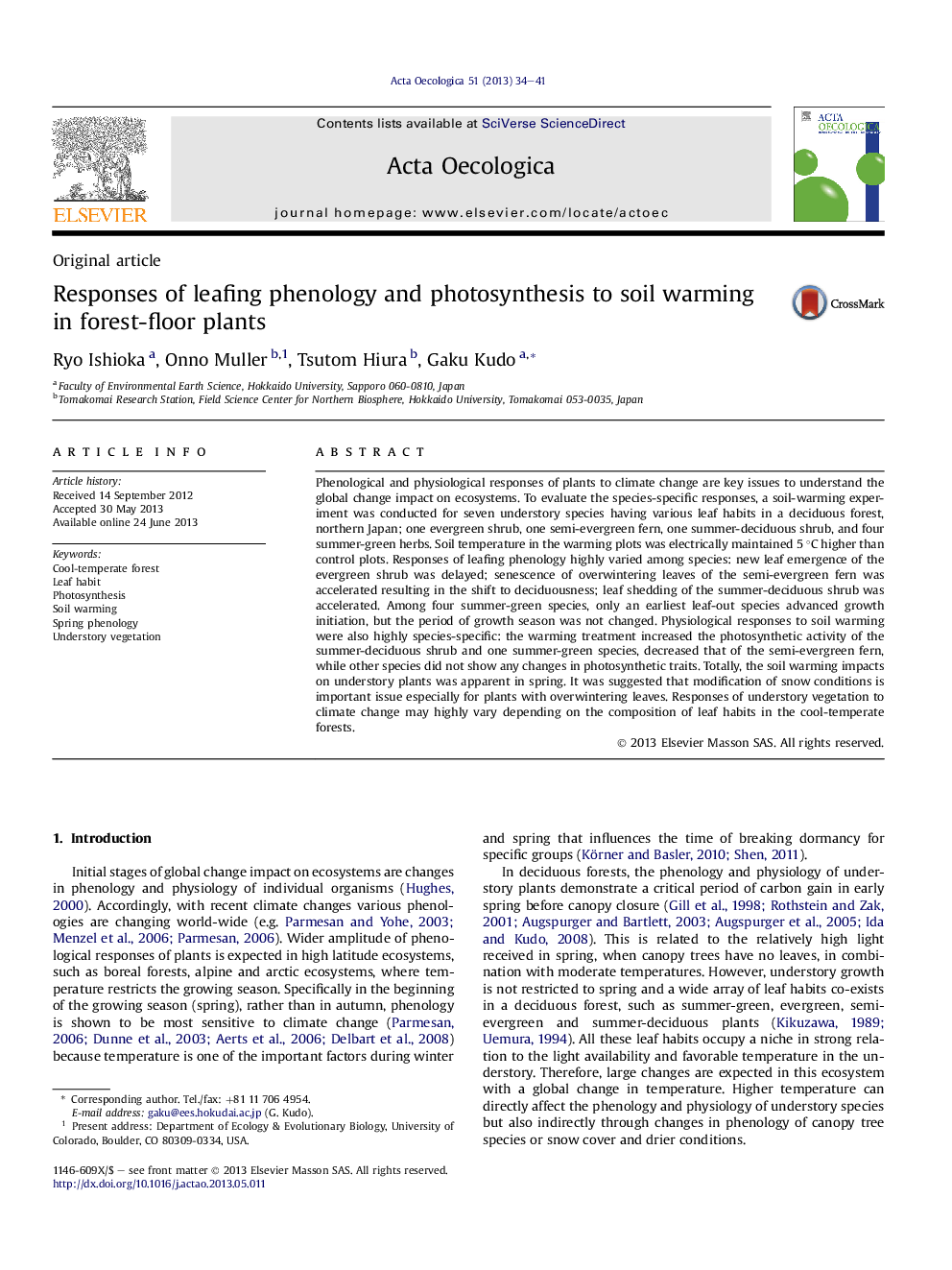| Article ID | Journal | Published Year | Pages | File Type |
|---|---|---|---|---|
| 4380782 | Acta Oecologica | 2013 | 8 Pages |
•Phenological responses to soil warming were most prominent in spring.•In summer-green herbs, only early leaf-out species was sensitive to warming.•Plants with overwintering leaves were sensitive to the changes in snow conditions.•Semi-evergreen plants responded negatively to soil warming.•Responses of summer-deciduous plants to soil warming were neutral or even positive.
Phenological and physiological responses of plants to climate change are key issues to understand the global change impact on ecosystems. To evaluate the species-specific responses, a soil-warming experiment was conducted for seven understory species having various leaf habits in a deciduous forest, northern Japan; one evergreen shrub, one semi-evergreen fern, one summer-deciduous shrub, and four summer-green herbs. Soil temperature in the warming plots was electrically maintained 5 °C higher than control plots. Responses of leafing phenology highly varied among species: new leaf emergence of the evergreen shrub was delayed; senescence of overwintering leaves of the semi-evergreen fern was accelerated resulting in the shift to deciduousness; leaf shedding of the summer-deciduous shrub was accelerated. Among four summer-green species, only an earliest leaf-out species advanced growth initiation, but the period of growth season was not changed. Physiological responses to soil warming were also highly species-specific: the warming treatment increased the photosynthetic activity of the summer-deciduous shrub and one summer-green species, decreased that of the semi-evergreen fern, while other species did not show any changes in photosynthetic traits. Totally, the soil warming impacts on understory plants was apparent in spring. It was suggested that modification of snow conditions is important issue especially for plants with overwintering leaves. Responses of understory vegetation to climate change may highly vary depending on the composition of leaf habits in the cool-temperate forests.
